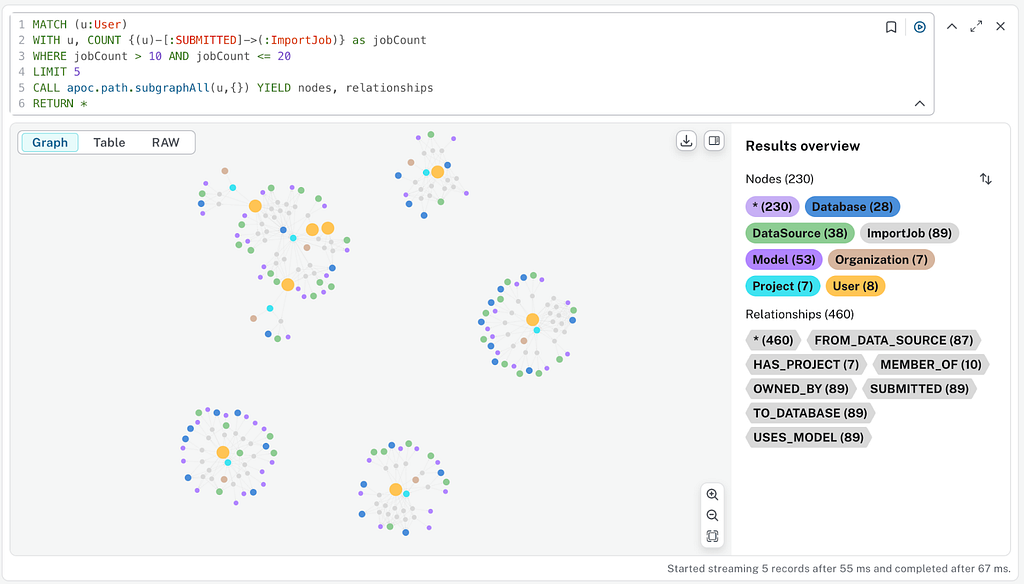Hidden GraphGems revisited: the 2.2 Meta-graph

Regional VP & Neo4j Advocate
2 min read

Originally posted on Rik’s Blog
The 2.2 Meta-graph
// generate the pre-2.2 META-graph MATCH (a)-[r]->(b) WITH labels(a) AS a_labels,type(r) AS rel_type,labels(b) AS b_labels UNWIND a_labels as l UNWIND b_labels as l2 MERGE (a:Node:Meta {name:l}) MERGE (b:Node:Meta {name:l2})MERGE (a)-[:OUTGOING]->(:Relationship:Meta {name:rel_type})-[:INCOMING]->(b)RETURN distinct l as first_node, rel_type as connected_by, l2 as second_node
That gave us a visualisation in the Neo4j browser that looked like this:

The Meta-graph as from Neo4j 2.2
// generate the 2.2 META-graph MATCH (a)-[r]->(b) WITH labels(a) AS a_labels,type(r) AS rel_type,labels(b) AS b_labels UNWIND a_labels as l UNWIND b_labels as l2 MERGE (a:Meta_Node {name:l}) MERGE (b:Meta_Node {name:l2})MERGE (a)-[:META_RELATIONSHIP {name:rel_type}]->(b)RETURN distinct l as first_node, rel_type as connected_by, l2 as second_node
Instead of creating a node for every relationship, it now just … creates a relationship for every relationship type, and adds a “name” property to the META_RELATIONSHIP relationship type. That’s the property that we can then select in the new browser to create a visualisation like this one:
How much nicer is that? A lot, if you ask me.
So take it for a spin, and let me know what you think. I for one like it 🙂
Cheers
Rik









